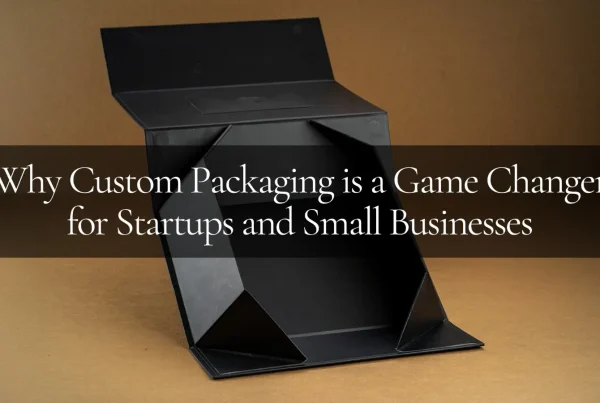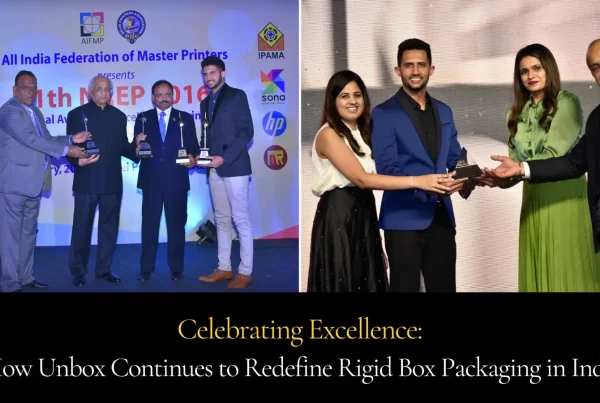In today’s rapidly changing world, the packaging industry is undergoing constant innovation and evolution. As consumers become more conscious of their impact on the environment, paper packaging has emerged as a sustainable alternative to traditional plastic packaging. In this article, we will explore the current landscape of paper packaging, the predicted trends for 2024, the future of paper packaging beyond 2024, and the challenges and opportunities that lie ahead.
Understanding the Current Landscape of Paper Packaging
Paper packaging has witnessed a significant shift in recent years. With growing concerns about plastic pollution, businesses and consumers are turning to eco-friendly packaging solutions. The emphasis on sustainability has led to an increased demand for paper packaging, which is biodegradable, recyclable, and renewable.
One of the key drivers of this shift towards eco-friendly packaging is the growing awareness of consumers. They are becoming more educated about the environmental impact of their choices and are actively seeking out products that are packaged in a sustainable manner. As a result, businesses are under pressure to adopt paper packaging solutions to align with consumer values.
The Shift Towards Eco-Friendly Packaging
In response to consumer demand, many companies are reevaluating their packaging strategies and incorporating eco-friendly practices. This includes using recycled and sustainably sourced materials for paper packaging. Additionally, companies are exploring innovative design techniques to reduce the amount of packaging used and optimize its recyclability.
For example, some companies are experimenting with modular packaging systems that allow consumers to easily disassemble and recycle different components of the packaging. This not only reduces waste but also encourages consumers to actively participate in the recycling process.
Furthermore, the shift towards eco-friendly packaging extends beyond the material itself. Companies are also implementing greener manufacturing processes and supply chain practices to reduce their carbon footprint. This holistic approach to sustainability ensures that the entire lifecycle of the packaging is environmentally friendly.
The Role of Technology in Paper Packaging
Technology plays a crucial role in the development of paper packaging. Advancements in manufacturing processes allow for more efficient production, reducing waste and costs. Additionally, technological innovations have enabled the development of new and improved paper packaging materials with enhanced properties, such as moisture resistance and durability.
Moreover, digital technologies are being utilized to enhance the consumer experience and provide valuable information. The integration of smart packaging solutions, like QR codes and near-field communication (NFC) tags, allows consumers to access product details, track the supply chain, and even provide feedback. This not only enhances transparency but also enables companies to gather valuable data for market analysis and product improvement.
Furthermore, technology is also being used to address specific challenges in paper packaging. For instance, researchers are exploring the use of nanotechnology to enhance the barrier properties of paper, making it more resistant to moisture and other external factors. This opens up new possibilities for paper packaging in industries where protection against environmental conditions is crucial, such as food and pharmaceuticals.
In conclusion, the current landscape of paper packaging is evolving rapidly due to the increasing demand for eco-friendly solutions. Companies are embracing sustainable practices and leveraging technology to develop innovative packaging materials and enhance the consumer experience. As the world continues to prioritize sustainability, paper packaging is set to play a pivotal role in shaping a greener future.
Predicted Trends in Paper Packaging for 2024
Looking ahead to 2024, several trends are expected to shape the paper packaging industry. One of the most significant trends will be the increased demand for sustainable packaging solutions. Consumers will continue to prioritize environmentally friendly options, driving businesses to adopt innovative paper packaging designs that are both functional and sustainable.
Increased Demand for Sustainable Packaging
In 2024, sustainable packaging will be the new norm. Consumers will expect products to be packaged in materials that are not only eco-friendly but also visually appealing and practical. This will drive companies to explore creative solutions that combine aesthetics with sustainability.
Furthermore, the demand for sustainable packaging will extend beyond just the materials used. Consumers will also expect packaging designs that minimize waste and promote recycling. Companies will need to consider the entire lifecycle of their packaging, from production to disposal, in order to meet these evolving consumer expectations.
Additionally, governments and regulatory bodies are likely to introduce stricter guidelines and regulations regarding packaging waste management. This will further incentivize businesses to invest in sustainable packaging practices to comply with these regulations and avoid penalties. Companies that proactively embrace sustainable packaging will not only meet regulatory requirements but also gain a competitive edge by aligning with consumer values.
Innovations in Paper Packaging Design
As companies strive to differentiate themselves in a competitive market, innovative packaging design will become increasingly important. In 2024, we can expect to see unique and eye-catching paper packaging designs that not only grab attention but also enhance the overall brand experience.
One such innovation will be the integration of interactive elements within paper packaging. Augmented reality (AR) and virtual reality (VR) technologies will allow consumers to engage with the packaging in a whole new way, creating immersive experiences and strengthening brand loyalty. Imagine a cereal box that comes to life when viewed through a smartphone, providing nutritional information, recipe ideas, and even interactive games for children. This kind of interactive packaging will not only captivate consumers but also provide valuable information and entertainment.
Moreover, advancements in printing technologies will enable intricate and detailed designs on paper packaging. From vibrant colors to intricate patterns, companies will have the opportunity to create visually stunning packaging that stands out on store shelves. This level of attention to detail will not only attract consumers but also convey a sense of quality and craftsmanship.
In conclusion, the paper packaging industry in 2024 will be driven by the increased demand for sustainable solutions and the need for innovative packaging designs. Companies that embrace these trends and invest in sustainable and visually appealing packaging will be well-positioned to meet consumer expectations and gain a competitive advantage in the market.
The Future of Paper Packaging Beyond 2024
Looking beyond 2024, the future of paper packaging holds immense potential. The ongoing focus on sustainability will continue to drive the adoption of paper packaging. However, there will also be new challenges and opportunities that businesses in the packaging industry must navigate.
Long-Term Impact of Sustainability on Paper Packaging
The long-term impact of sustainability on paper packaging will be significant. As environmentally conscious attitudes become ingrained in society, paper packaging will become an essential element of brand reputation. Companies that fail to adopt sustainable packaging practices risk losing customers and damaging their brand image.
Moreover, the integration of circular economy principles will become vital for the paper packaging industry. Emphasizing the reuse, recycling, and regeneration of packaging materials will be key to minimizing waste and maximizing resource efficiency. By implementing innovative technologies and processes, such as using biodegradable coatings or incorporating plant-based fibers, the paper packaging industry can further enhance its sustainability efforts.
The Potential of Smart Packaging
Smart packaging holds immense potential for the future of paper packaging. Advances in technology will enable paper packaging to become more than just a protective shell for products. With the integration of sensors and wireless communication, packaging will become an interactive tool that delivers personalized experiences to consumers.
Imagine a world where a cereal box can remind you to reorder when it’s running low or a package can provide real-time information about the freshness of its contents. These innovations not only enhance convenience but also help reduce waste by preventing overconsumption. Furthermore, smart packaging can enable manufacturers to gather valuable data on consumer behavior and preferences, allowing them to tailor their products and marketing strategies accordingly.
Additionally, smart packaging opens up new avenues for brand engagement and storytelling. By incorporating augmented reality features, paper packaging can transform into an immersive platform that showcases a brand’s values, history, and product information. This not only captivates consumers but also fosters a deeper connection between the brand and its customers.
In conclusion, the future of paper packaging beyond 2024 is filled with exciting possibilities. The industry’s commitment to sustainability and the integration of smart technologies will shape the way we perceive and interact with packaging. As consumers become more conscious of their environmental impact and seek personalized experiences, paper packaging will continue to evolve and thrive in the years to come.
Challenges and Opportunities in Paper Packaging
While there are numerous opportunities in the paper packaging industry, there are also several challenges that businesses must address to remain successful.
One significant challenge faced by businesses in the paper packaging industry is the need to constantly innovate and adapt to meet the demands of a rapidly changing market. Consumer preferences are shifting towards sustainable and eco-friendly packaging options, prompting companies to invest in research and development to create innovative solutions that are both environmentally friendly and cost-effective.
Overcoming Barriers to Sustainable Packaging
One of the main challenges in adopting sustainable paper packaging is the higher production costs compared to traditional packaging materials. However, as technology advances and economies of scale are achieved, the cost differential is expected to gradually decrease.
Furthermore, businesses are exploring alternative sources of raw materials for paper packaging, such as agricultural residues and non-wood fibers, to reduce their environmental impact. By diversifying their material sourcing strategies, companies can enhance the sustainability of their packaging products and reduce their reliance on virgin wood fiber.
Additionally, businesses must work collaboratively with suppliers, manufacturers, and consumers to create a circular economy for paper packaging. This requires robust collection and recycling infrastructure, as well as consumer education to ensure proper disposal.
Capitalizing on Emerging Market Opportunities
As the demand for sustainable packaging continues to grow, businesses have the opportunity to tap into emerging markets and expand their reach. Developing countries, in particular, present untapped potential for companies seeking to introduce eco-friendly packaging solutions.
Moreover, with the rise of e-commerce, there is a need for innovative paper packaging solutions that can withstand the rigors of transportation while minimizing waste. Businesses that can provide reliable and sustainable packaging options for online retailers will have a competitive edge in this evolving market.
Conclusion: The Evolution of Paper Packaging
The future of paper packaging is bright, driven by the growing preference for sustainable alternatives and technological advancements. As businesses adapt to meet consumer demands, the packaging industry will continue to evolve and innovate.
Key Takeaways for Businesses in the Packaging Industry
- Embrace sustainability as a core value and incorporate it into all aspects of packaging design and manufacturing.
- Invest in research and development to stay ahead of emerging trends and technologies in paper packaging.
- Collaborate with suppliers, manufacturers, and consumers to create a circular economy for paper packaging.
- Emphasize creativity and unique designs to differentiate products and enhance the brand experience.
- Anticipate and adapt to changing regulations and guidelines regarding packaging waste management.
Preparing for the Future of Paper Packaging
As the world continues to prioritize sustainability and consumers become increasingly aware of their purchasing choices, paper packaging will play a vital role in the packaging industry. By embracing innovation, integrating technology, and prioritizing environmental responsibility, businesses can position themselves for success in the evolving landscape of paper packaging.




